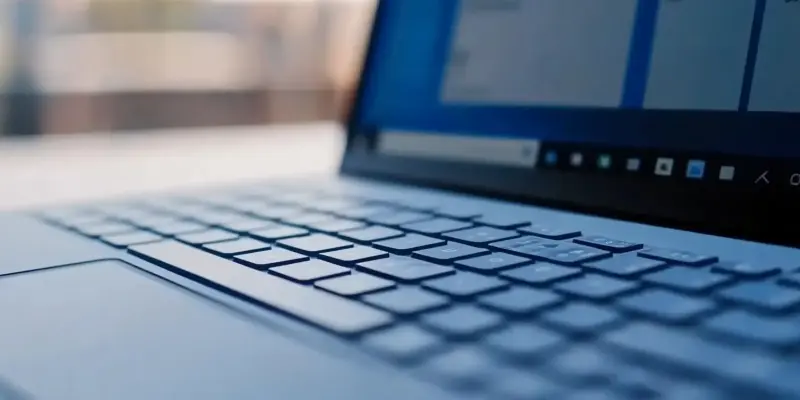Microsoft’s latest Patch Tuesday update, released in March 2025, addresses a critical need for improved cybersecurity as it tackles several significant vulnerabilities across its extensive software ecosystem. With 57 bugs identified and fixed, the update is crucial for maintaining the security and functionality of widely-used Microsoft products, including Windows, Office, and Azure. This release is particularly noteworthy due to the presence of seven zero-day vulnerabilities, six of which have already been exploited by malicious actors.
The urgency and importance of this update cannot be overstated, particularly with vulnerabilities such as CVE-2025-24985. This specific flaw enables remote code execution, which is perilous because offenders can trick users into mounting malicious virtual hard disk (VHD) files. Accompanying this, CVE-2025-24993 also pertains to Windows Fast FAT System Driver and Windows NTFS vulnerabilities, both of which lead to unauthorized access and potential compromise of users’ systems.
Zero-Day Vulnerabilities and Their Exploits
One of the most concerning aspects of the March update is the breadth of zero-day vulnerabilities it addresses. Microsoft has identified and rectified vulnerabilities that have already been exploited in live environments, underscoring the risk posed to users who haven’t updated their systems. Two particularly pressing flaws are CVE-2025-24984 and CVE-2025-24991, both related to information disclosure within Windows NTFS. CVE-2025-24984 allows attackers with physical access to insert malicious USB drives and read memory content, confronting users with potential data exposure.
Similarly, CVE-2025-24991, which takes advantage of the mounting of malicious VHD files, also enables malicious entities to perform acts of data theft. In addition to these, CVE-2025-24983, affecting the Windows Win32 Kernel Subsystem, grants local attackers system privileges, dramatically escalating the potential damage from breaches. Notably, these vulnerabilities were primarily reported anonymously, demonstrating a strong environment of collaborative cybersecurity.
Another significant zero-day vulnerability addressed in this update is CVE-2025-26633, related to the Microsoft Management Console. This flaw can be exploited to bypass critical security features, thereby allowing attackers to perform unauthorized actions stealthily.
Third-Party Contributions and Additional Vulnerabilities
The identification and reporting of these vulnerabilities have heavily relied on collaborations with external security organizations. For instance, ESET identified CVE-2025-24983, while Trend Micro exposed CVE-2025-26633. Such partnerships are integral, as timely and precise reporting leads to quicker patches and enhanced security for users across the globe. Unpatched.ai also played a pivotal role by flagging the remote code execution vulnerability, CVE-2025-26630, within Microsoft Office Access, which can be manipulated through phishing attacks once users open malicious files.
In addition to zero-day vulnerabilities, Microsoft’s March update patched six other severe flaws. These include critical issues within Microsoft Office, Remote Desktop Client, Windows Domain Name System (DNS), Windows Remote Desktop Services, and the Linux Subsystem for Windows Kernel. Each of these vulnerabilities, if left unpatched, could facilitate unauthorized access and elevate the risk of data breaches. As the threats in cybersecurity continue to rise, addressing these vulnerabilities is imperative for preventing potential exploitation.
Recommendations for Users
Microsoft’s Patch Tuesday updates are rolled out monthly on the second Tuesday at 10 AM Pacific Time. These patches are generally downloaded and installed automatically to ensure optimal device security. However, Microsoft underscores the necessity for user attentiveness. Regularly checking for updates and manual installation of patches are crucial steps for safeguarding devices against schemes orchestrated by cybercriminals.
Users should navigate to the Start button, select ‘Settings’, click on ‘Windows Update,’ and choose ‘Check for updates’ to ensure the most recent patches are installed. Given the active exploitation of some vulnerabilities, timely application of these updates is essential for closing security gaps and fortifying defenses.
Ongoing Cybersecurity Vigilance
Microsoft’s March 2025 Patch Tuesday update is a critical release for improved cybersecurity, addressing numerous vulnerabilities in its vast software ecosystem. With 57 bugs identified and resolved, this update is vital for ensuring the security and smooth operation of widely-used Microsoft products like Windows, Office, and Azure. This release stands out because it includes seven zero-day vulnerabilities, six of which have already been exploited by cybercriminals.
The urgency and significance of this update are immense, especially with vulnerabilities such as CVE-2025-24985. This particular flaw permits remote code execution, a dangerous exploit as attackers can deceive users into loading malicious virtual hard disk (VHD) files. Furthermore, CVE-2025-24993 concerns vulnerabilities in the Windows Fast FAT System Driver and Windows NTFS, leading to unauthorized access and potential system compromise. With these and other fixes, Microsoft emphasizes its ongoing commitment to protecting its users from evolving cybersecurity threats.

